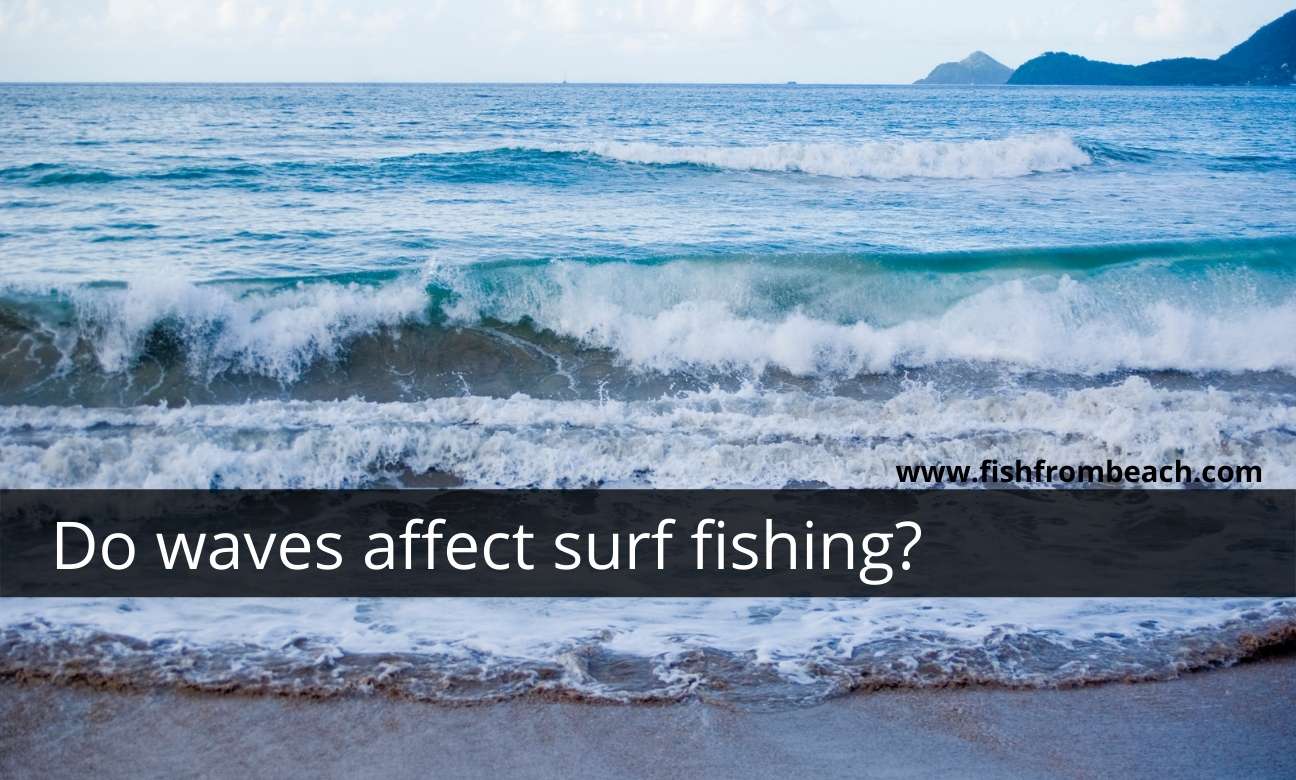
Do waves affect surf fishing? This is a very fair question to ask since fishing off the beach means throwing bait into the surf area where the waves flip over and break. The waves are therefore an important player in the game and can have a significant impact on the rewards we get while fishing.
So can waves dictate how much bites/catches we get? And how do they improve or decrease the productivity and results of surf fishermen?
That’s what this article is all about.
In the following paragraphs, we’ll go over the different ways waves affect surf fishing and how you can predict the bite just by observing how the waves crash in the surf area.
So without further talking, let’s get into it.
Too Long; Didn’t Read. In general, waves have a positive impact on surf fishing as they provide fish with better safety and feeding opportunities and also make it easier for predators to hunt prey. That said, an extremely large swell can be life threatening for surf anglers and also force fish to migrate offshore in search of calmer waters.
How do waves help surf fishing?
Waves can have a positive impact on surf fishing. The first thing to note here is that a choppy surf puts more pressure on the seabed, which stirs up nutrients buried below the surface and therefore provides the fish with a better food supply.
This activates the whole food chain in the nearshore waters.
The small baitfish spot more tiny lifeforms to feed on and therefore leave their shelter and enter the open waters. This obviously exposes them to the larger predators and makes them easier to hunt and catch.
Even the sizable species that usually hold offshore are conditioned to approach the shore when it is agitated. They know that the waves expose more prey and therefore move closer to compete in the frenzy.
The waves also make the water more colorful and cloudy, providing better cover for the small fish to leave the shelter and search for food, and for the larger ones to ambush and surprise unwary prey.
Another reason predatory fish like to stand close to shore in rough surf conditions is that the waves and current make it difficult for small fish to swim and navigate the water body.
In other words, choppy conditions disorientate the small fish and exhaust them, making them much easier to hunt and pursue. Opportunistically, large fish like that because feeding becomes less energy-consuming.
The bottom line is that waves can bring more fish to the surf while encouraging them to feed more. Surf fishing in such conditions will surely give you more rod shakes and catches.
Want more? Sure. A large swell also exposes more water to the air, increasing its dissolved oxygen content and therefore encouraging more fish to hold in the surf area.
When do waves sabotage surf fishing?
Having laid out all of the above ways on how waves help surf fishing, I should now devote an entire section to how waves can also be a bad sign for surf fishermen.
The main idea here is that the waves are good for surf fishing, but only up to a certain degree.
Let me elaborate.
The first thing to note here is that big waves can be life threatening for surf fishermen standing on the shoreline. Never underestimate the power of water. It only takes one strong wave to drag you out of your soles.
I would never cast a line if the swell is over 5 feet. It’s not even worth it as big swells induce a lot of water turbulence which can be disorienting for most species, including large ones with good swimming abilities and power.
It doesn’t even need to affect the large fish. All it takes to have mediocre results when fishing is to eradicate the base of the food chain and the top predators will systematically leave elsewhere in search of something to eat.
So it is likely that you will find less fish within your casting range if the waves are too high. They will either be a little deeper in the ocean or hidden in covered areas to take a break from the strong currents.
Heavy swells can also impact the stability of your terminal tackle and make it difficult for you to keep your bait where you want it to be.
Why does this happen? Well, simply because strong waves put more pressure on your line and gear, pushing them out of the area where you deployed them in the first place. Here a large pyramid or sputnik sinker becomes necessary, although it can hurt your sensitivity and bite detection abilities.
Bite detection can also be compromised during strong wave action, as your rod will keep bouncing and shaking, giving you no clear signal if it’s a bite or just the waves effect.
What type of waves to choose?
Well, as we mentioned above, stay away from waves higher than 5ft. In general, a swell between 2 and 3 ft should give you the best results.
Once you’ve chosen an optimal swell height, start paying attention to the frequency.
The swell frequency (or period) is the amount of time between two successive waves.
Personally, I get the best results when that interval exceed 10 seconds.
This is because predatory fish usually take advantage of the swell period to hunt disoriented preys from the previous wave. A long period therefore induces more feeding activity and hence better chances to hook up on something.
Short swell periods do not give that much time to the fish and therefore may reduce the bite.
The way the waves crash is also something to consider.
For beginners, I recommend looking for beaches where the waves gradually break up and roll over a long distance. This creates turbulence over a larger area and therefore gives the fish more cover, more safety, and more feeding opportunities.
In other words, the fish will be spread in more places and you will have a good chance of landing on something wherever you cast.
Conversely, waves that produce sharp cut-offs in the water when they break produce less turbulence and therefore force fish to concentrate in narrower areas to compete one the limited cover and food supply.
Don’t get twisted. This is also good for surf fishing as there will be more competition on your offerings. However, be aware that targeting these type of waves requires better casting skills and higher accuracy.
Some recommended surf fishing gear(*)
Note (*): If you make a purchase through links from this website, we may get a small share of the sale from Amazon or other similar affiliate programs.
Surf Fishing Survey
Help us provide you with better content by answering simple questions about your surf fishing experience and knowledge.
We will put the collected responses together and turn them into valuable information that will help you catch more fish from shore 😉
Note: No personal information will be collected with your answer.

